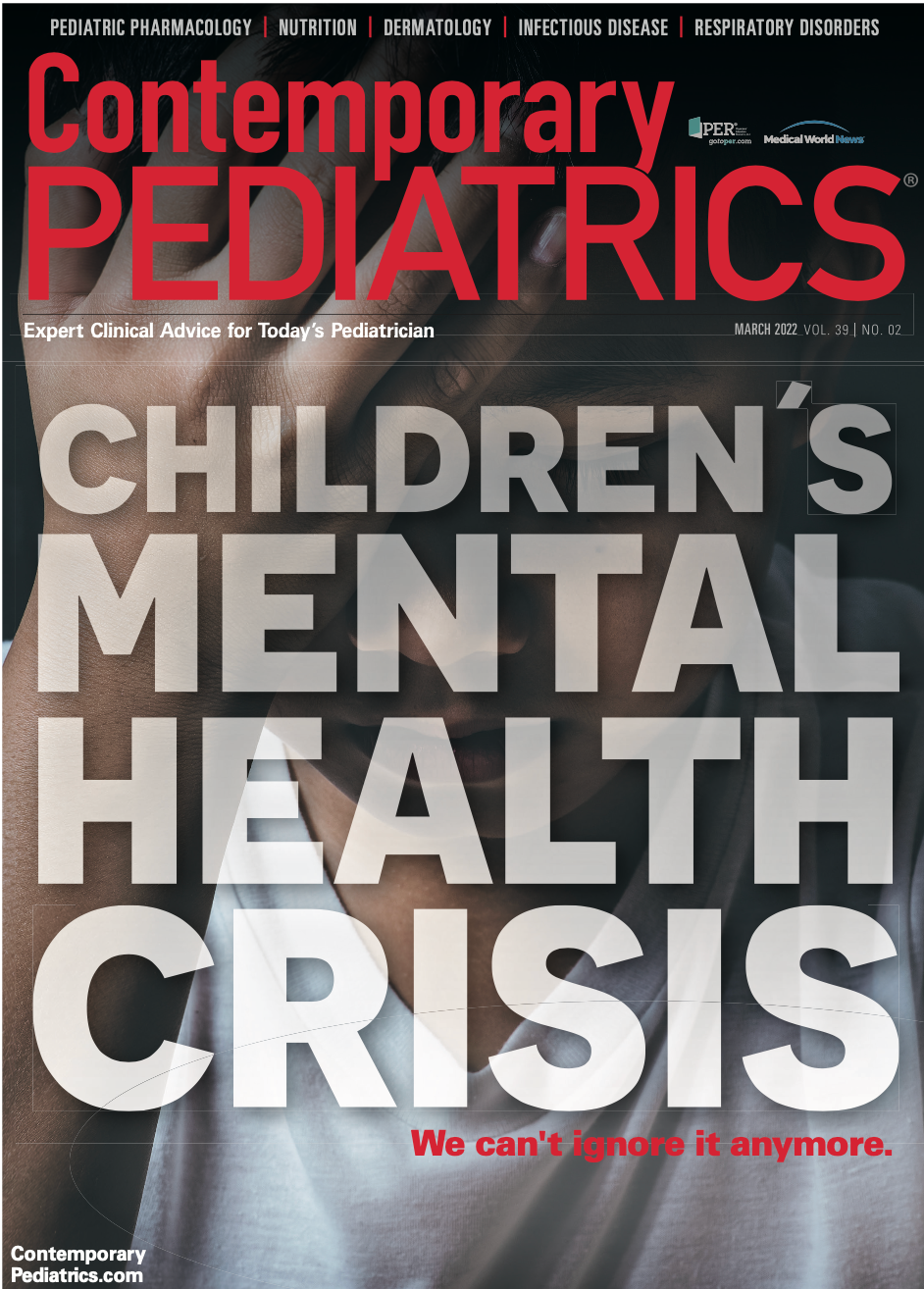How are our children doing right now?
Two pediatric health care providers assess the mental and academic health of our pediatric population as we mark year 3 of the pandemic.
As noted several times in this special mental health issue of Contemporary Pediatrics®, the COVID-19 pandemic has had a profound impact on children and adolescents. In caring for our pediatric patients, we will continue to live with the fact that the disruptions have not been uniformly felt, with increased impact on Black and Brown children and those living in poverty; additionally, levels of access to routine pediatric health services have varied throughout the pandemic.1 For all children, though, we have to make up much lost time when it comes to physical, mental, and academic concerns, as well as socialization issues.
Because schools provide another resource for identifying and addressing mental health concerns, the complete or partial shift to virtual learning likely compounded the mental health crisis. Families have also experienced greater financial challenges leading to an increase in adverse childhood experiences, which are associated with chronic medical conditions—including mental health pathology—long after the initial insult has passed. According to one study, “the prevalence of depression and anxiety symptoms during the COVID-19 pandemic has doubled, compared with prepandemic estimates.”1
Impacts based on socioeconomic levels
The data have begun to come in regarding COVID-19’s impact on varying communities. In Washington, DC, Goyal et al recognized the disproportionate number of positive COVID-19 cases among ethnic minorities from communities with lower socioeconomic status based on data from the first pediatric drive-through COVID-19 testing site in the United States.2 This trend continued to be consistent when looking at rates of hospitalizations, intensive care needs, and cases of multisystem inflammatory syndrome in children.
Impacts based on age groups
Similarly, the pandemic’s effects on growth and development, including socioemotional development, vary based on age.
Early childhood: A profound degree of development takes place from birth to 5 years of life. Because of the pandemic, children aged 5 years and younger have spent all or a significant portion of their lives in social isolation alongside parents or caregivers. These decreased social interactions could lead to behavioral and developmental changes, including more separation anxiety and potential developmental delays.
Decreased developmental and behavioral screening results in delayed diagnosis and management. Early detection and intervention are critical for overcoming delays in this young age group. Some early-intervention programs, as in New York, New York, have seen a drop in early-intervention referrals.3 Developmental services were also interrupted for children with existing developmental delays. An effort to pivot support services to virtual had varying levels of success, based on the child’s age and the parent’s capacity to assist during virtual sessions and digital access.
School age: The impact of virtual instruction on children has been substantial and not uniform. Disparities in math and reading between White students and Black and Latinx students have grown during the pandemic.4 As students returned to in-person instruction, behavioral-related needs in school increased, placing additional pressure on teachers and schools looking to close academic gaps created by the pandemic. School-age children thrive on routine, and students and their families experienced substantial disruptions because of COVID-19 exposure and illness. These disruptions led not only to additional academic losses but also challenges in navigating the school day. A lack of routine can cause dysregulated sleep and the subsequent behavioral impact.
Adolescence: Marked by a desire for independence and peer relationships, adolescence also is notable for experiential learning. The pandemic has been profoundly disruptive for teenagers. Suicidal ideation among teenagers has increased.5 The inability to engage with peers face-to-face and move in social circles without fear of contracting COVID-19 has been challenging, as has social isolation with parents and family. Despite being able to pivot adolescent visits to telemedicine, difficulties around privacy and confidentiality stifled the ability to keep teenagers connected to comprehensive care, including mental health services, with a 24% reduction in mental health services in the first year of the pandemic by children participating in Medicaid and the Children’s Health Insurance Program.6
The good news is that as a country, we have come a long way from the early months of this pandemic, and children have returned to school and many of their normal activities. However, the past 2 years cannot be erased, and we must work together to make up for all that has been lost.
References
1. Racine N, McArthur BA, Cooke JE, Eirich E, Zhu J, Madigan S. Global prevalence of depressive and anxiety symptoms in children and adolescents during COVID-19: a meta-analysis. JAMA Pediatr. 2021;175(11):1142-1150. doi:10.1001/ jamapediatrics.2021.2482
2. Goyal MK, Simpson JN, Boyle MD, et al. Racial and/or ethnic and socioeconomic disparities of SARS-CoV-2 infection among children. Pediatrics. 2020; 146(4):e2020009951. doi:10.1542/ peds.2020-009951
3. Advocates for Children of New York. Delayed interventions: early indicators of the pandemic’s impact on infants and toddlers. January 2021. Accessed February 4, 2022. https://www.advocatesforchildren.org/sites/default/files/library/ delayed_interventions_data_brief_1.2021.pdf?pt=1
4. US Department of Education Office of Civil Rights. Education in a pandemic: the disparate impacts of COVID-19 on America’s students. June 9, 2021. Accessed February 4, 2022. https://www2.ed.gov/about/offices/list/ocr/docs/20210608-impacts-of- covid19.pdf
5. Mayne SL, Hannan C, Davis M, et al. COVID-19 and adolescent depression and suicide risk screening outcomes. Pediatrics. 2021;148(3):e2021051507. doi:10.1542/peds.2021-051507
6. Medicaid & CHIP and the COVID-19 public health emergency preliminary Medicaid and CHIP data snapshot services through May 31, 2021 fact sheet. Medicaid.gov. Accessed February 11, 2022. https://www.medicaid.gov/state-resource-center/downloads/medicaid-chip-covid19-fact-sheet-11122021.pdf
7. United Health Foundation grant to Children’s National Hospital to address health needs of youth in communities with fewer resources. News release. United Health Group; November 9, 2021. Accessed February 11, 2022. https://www.united-healthgroup.com/newsroom/2021/2021-11-9-uhf-grant-childrens-hospital.html
